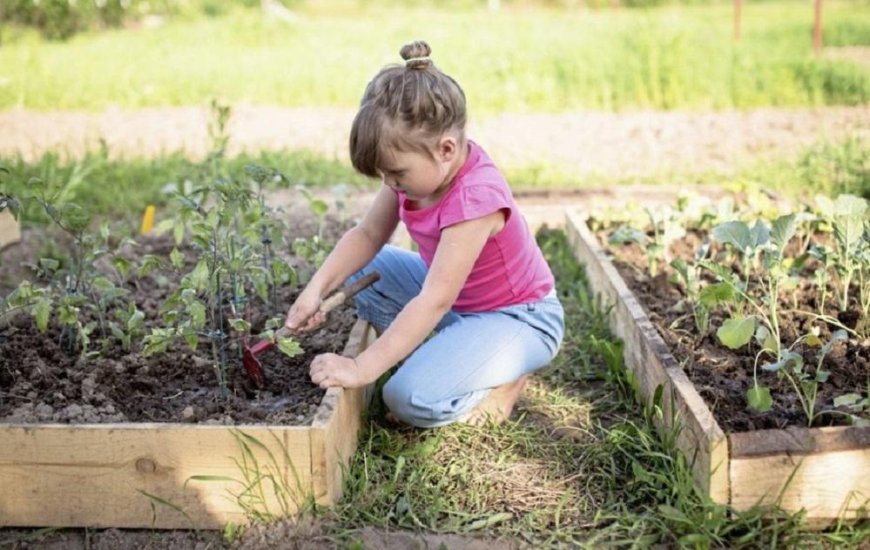How to teach children to grow and eat vegetables
persist into adulthood. They can also develop diseases such as type 2 diabetes, osteoarthritis and cancer. How to teach children to grow

Being overweight in children is a serious problem that pediatricians in many countries talk about. For example, surveys conducted in 2017 and 2018 in the UK showed that 28% of children aged 2 to 15 were overweight or even obese. Such children have a high risk that overweight will persist into adulthood. They can also develop diseases such as type 2 diabetes, osteoarthritis and cancer. How to teach children to grow and eat vegetables.
This increase in obesity is caused by poor nutrition and decreased physical activity. Only 41% of 11-year-olds in Europe and Canada eat vegetables daily, and only 24% exercise daily (such as running or brisk walking) for an hour or more.
Addressing this problem in early childhood is important for developing healthy behaviors throughout life. One possible solution is to grow plants at school as an extracurricular activity. This strategy is aimed at both increasing physical activity and developing healthy eating skills.
How to teach children to grow vegetables
In 2018, a group of child psychologists from the UK conducted an experiment in a primary school in London. Scientists have developed a program that included growing vegetables. Appropriate classes were held for children two hours a week during the year. There were also separate lessons for children about the benefits of plant foods. In addition, children were encouraged to eat vegetable dishes.
Classes on growing vegetables were developed based on the suggestions of the children themselves. The children suggested where to build greenhouses for plants. In winter, under the guidance of teachers, they prepared beds for planting vegetables - weeded them and fed them. Then the children sowed the seeds and took care of the plants.
Research results
In order to conclude about the benefits of the classes described above, the researchers conducted the experiment simultaneously in two groups of 30 people. While the experimental group grew vegetables during the year, the control group studied according to the regular school program. In the second half of the year, the control group was also asked to grow vegetables.
Must Read: realme seeks to enhance the global AIoT infrastructure on the back of a strong 2020 performance
The researchers asked children in both groups to wear a pedometer watch for a week to measure their level of physical activity. The children were also asked to fill out a questionnaire in which they indicated whether they liked fruit and vegetables and how much they ate.
Psychologists found that children who were involved in growing vegetables spent more time on the move than their classmates. Also, children from the experimental group showed great physical activity, performing work on growing plants with moderate or high intensity. Also in conversations with psychologists, the children mentioned that during the time they spent in greenhouses, they became stronger and they developed muscles.
Despite the fact that most of the experiment took place in the winter, it did not reduce the children's interest in growing vegetables. They enjoyed the activity and wanted to spend more time outdoors.
What does the study say?
The study did not show that children who worked in the greenhouse began to eat more vegetables. However, during the conversation, the children reported that during the experiment, they learned more about plants, proper nutrition and the benefits of fruits and vegetables. Many children said they began to eat vegetables that had previously been abandoned.
At the first stage of the experiment, in winter, the children were preparing greenhouses, so they could not try the vegetables they grew themselves. Some children said during the interview that they would eat more vegetables if they worked in greenhouses all year round.
Teachers found that children who had previously failed to learn were very active in growing plants. At the end of the experiment, they showed significant progress in learning.
During the conversation, the children also expressed the idea that nature can unite people and make them better. One of the members of the experimental group said that he had previously quarreled with a classmate, but while working in the greenhouse, they reconciled. The children also said that the menu in the school canteen should be more varied: it is worth adding more vegetable dishes.
Growing vegetables as an extracurricular activity can inspire teachers to spend more time outdoors. In the long run, this can improve children's health and help overcome mass overweight in children.
